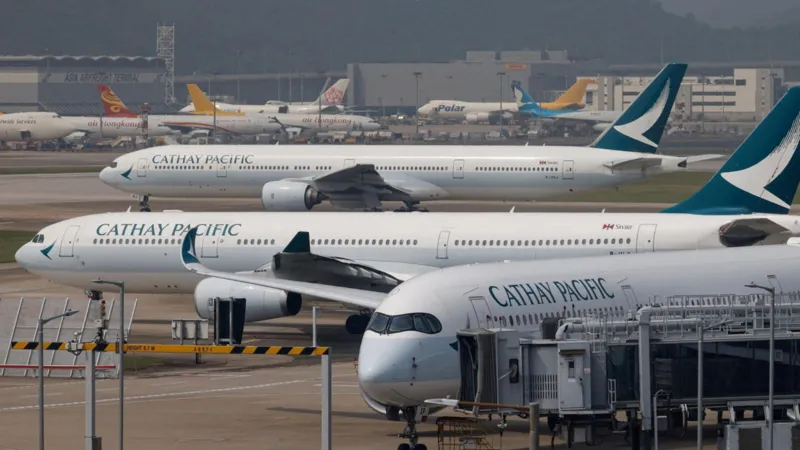An engine fire on a Cathay Pacific Airbus A350 earlier this month was caused by a fuel leak and could have led to extensive damage, according to investigators.
The incident, which occurred shortly after the plane departed Hong Kong for Zurich in early September, forced the airline to turn the flight around and ground several planes. Hong Kong’s Air Accident Investigation Authority (AAIA) revealed that the fire was triggered by a broken fuel hose in the plane’s Trent XWB-97 engine, manufactured by British engineering firm Rolls-Royce.
A preliminary report from the AAIA found that the protective covering of a fuel hose had ruptured, leaving a hole that allowed fuel to leak. The engine showed signs of a fire, including burn marks and soot. Further inspection revealed that five additional fuel hoses in the same engine were also defective. Investigators warned that, if not promptly addressed, the issue could have escalated into a more serious engine fire, potentially causing significant damage to the aircraft.

The incident occurred as the Airbus A350, carrying 348 passengers and crew, had just taken off from Hong Kong. After receiving a fire warning in the cockpit, the pilots shut down the affected engine, deployed the fire extinguishers, and safely returned to Hong Kong.
Following the event, Cathay Pacific conducted inspections of its A350 fleet, which uncovered issues on 15 other aircraft. In response to the findings, the AAIA recommended that the European Union Aviation Safety Agency (EASA) require Rolls-Royce to implement new inspection standards for the Trent XWB engines.
EASA responded by mandating immediate inspections of fuel hoses on all aircraft using the same type of engine. It has since replaced these emergency measures with a broader inspection regime covering several variants of the Trent XWB engine, following evidence that a specific cleaning process during engine refurbishment could degrade fuel hoses.
Cathay Pacific, which took delivery of its first Airbus A350 in 2016, stated that it had “proactively initiated a fleet-wide inspection” of its A350s, ensuring compliance with EASA’s directives. The airline said it was working closely with the airframe and engine manufacturers to ensure safety.
While the incident initially raised concerns about the entire A350 fleet, it soon became clear that the issue was confined to external fuel lines rather than internal engine components. This allowed the problem to be resolved relatively quickly without the need for costly engine redesigns.
Rolls-Royce emphasized that the engine’s detection system worked as expected during the incident, promptly alerting the crew, who were able to take necessary action. The company also stated that it is continuing to collaborate with authorities and Cathay Pacific to support the investigation.
In 2023, Rolls-Royce announced plans to invest in enhancing its range of engines, including the Trent XWB-97. However, the durability of the engine and the costs of maintenance have been subjects of concern, with Emirates boss Tim Clark raising these issues earlier this year.